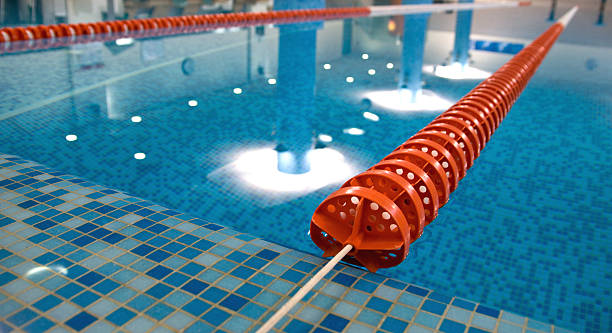
Why Swim Time Converters Are Not Accurate
Swim time converters have become indispensable tools for swimmers, coaches, and event organizers, providing a means to compare and analyze performance across different settings and competitions. However, the quest for accurate swim time conversion faces numerous challenges, ranging from variations in pool designs to the influence of environmental factors. In this article, we’ll delve into the intricacies of swim time conversion, exploring the reasons behind its inaccuracies and proposing ways to enhance precision.
Introduction
Swim time converters have gained popularity in the swimming community as valuable aids in comparing performances across different contexts. Whether it’s a swimmer analyzing their personal records or coaches evaluating their athletes’ progress, these tools play a crucial role. However, the accuracy of swim time converters has been a subject of debate and concern within the swimming community.
The Need for Swim Time Conversion
Swimming competitions and training sessions often use different units to measure time, including meters, yards, and even minutes per 100 meters. The need for swim time conversion arises when swimmers participate in events that use a different measurement standard than their usual training or competitions.
Common Swim Time Conversion Tools
Several online tools are available for converting swim times effortlessly. These tools typically allow users to input their time in one unit and receive an equivalent time in another. While these converters have simplified the process, their accuracy remains a point of contention.
Challenges in Swim Time Conversion
Accurate swim time conversion faces challenges due to various factors, such as the design of the swimming pool, variations in length, and even the materials used in pool construction. Understanding these challenges is essential to grasp the limitations of conversion tools.
Understanding the Role of Conversion Algorithms
The algorithms used in swim time conversion contribute significantly to the accuracy of the results. However, these algorithms are not foolproof and may lead to discrepancies, especially in extreme conditions or non-standard pool configurations.
The Impact of Environmental Factors
Swimming is greatly influenced by environmental conditions, including water temperature, humidity, and altitude. These factors can affect a swimmer’s performance and introduce complexities when attempting to convert times between different environments.
Comparing Manual and Automated Conversion
While automated conversion tools are prevalent, some swimmers and coaches still resort to manual calculations. Both methods have their advantages and disadvantages, and understanding when to rely on automation or manual conversion is crucial.
One of the significant challenges in swim time conversion is the absence of a universal standard for measurement. Different countries and competitions may adopt distinct units, leading to confusion and potential inaccuracies when using conversion tools.
Real-Life Examples of Inaccuracies
Instances where inaccurate swim time conversions have impacted the outcome of races or training sessions underscore the importance of addressing this issue. Swimmers and coaches share their experiences dealing with the repercussions of inaccurate conversions.
Addressing the Misconceptions
There are common misconceptions surrounding swim time conversion, such as assuming that all conversion tools provide accurate results. Debunking these myths and understanding the limitations of conversion tools is essential for the swimming community.
Improving Swim Time Accuracy
To enhance the accuracy of swim time conversion, swimmers, coaches, and event organizers can implement certain practices. From standardized training approaches to meticulous event planning, these measures contribute to more reliable swim time data.
The Role of Standardization in Swim Timing
Establishing universal standards for swim time measurement is a pivotal step in addressing inaccuracies. The article explores ongoing efforts within the swimming community to standardize measurement units and improve the consistency of swim time data.
User Experiences and Feedback
Insights from swimmers who have encountered inaccuracies in swim time conversion provide a real-world perspective on the impact of these issues. Understanding user experiences helps identify areas for improvement in current conversion practices.
Looking Toward the Future
As technology advances, so does the potential for more accurate swim time measurement. The article explores emerging technologies and innovations that hold promise for the future of swim time conversion, offering a glimpse into what the swimming community can expect.
Conclusion
In conclusion, while swim time converters have become valuable tools for swimmers and coaches, their accuracy remains a challenge. The complexities introduced by factors like pool design, environmental conditions, and measurement unit discrepancies contribute to inaccuracies. By understanding these challenges and actively working towards standardization and improvement, the swimming community can move towards more precise and reliable swim time conversions.
FAQs: Swim Time Converters
- Are online swim time converters reliable?
- Online converters can provide a quick estimate, but factors like pool design and environmental conditions may affect their accuracy. Along with other personal factors.
- Why is there no universal standard for swim time measurement?
- The lack of a universal standard stems from historical practices and regional preferences, making standardization challenging.
- How do environmental factors impact swim time accuracy?
- Water temperature, humidity, and altitude can influence a swimmer’s performance, leading to variations in swim times.
- Can manual calculations be more accurate than automated conversion tools?
- In certain situations, manual calculations may be more accurate, especially when considering unique pool designs or extreme environmental conditions.
- What initiatives are being taken to standardize swim time measurement?
- Various organizations within the swimming community are actively working towards establishing universal standards to improve the consistency of swim time data.


